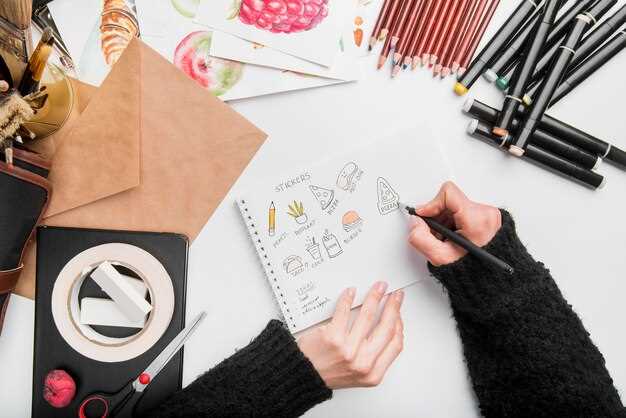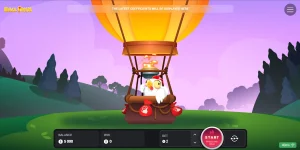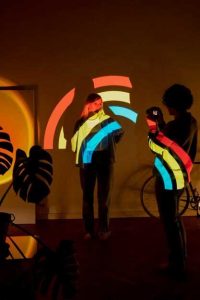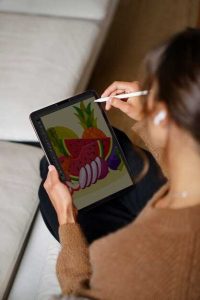Explore augmented reality as a key tool for your next creative visual project in 2025. As technology seamlessly integrates into everyday life, more artists and designers are incorporating AR elements into their work, leading to immersive experiences that captivate audiences. Consider the way AR can enhance storytelling by layering digital elements over real-world environments, providing a unique angle to visualize narratives.
Prioritize sustainability in your creative endeavors. More creators are leveraging recycled materials and eco-friendly processes to shape their projects, responding to the growing demand for environmentally responsible art. From using second-hand canvases to incorporating natural dyes in digital art prints, sustainable practices not only reduce waste but also add a new dimension of storytelling that resonates with audiences concerned about the planet’s future.
Look toward artificial intelligence to inspire and innovate. AI tools offer capabilities such as generating personalized content or simulating complex visual scenarios that were previously unimaginable. By integrating AI-driven tools and platforms, artists can experiment with novel forms of expression, pushing the boundaries of traditional visual creativity and opening up avenues for new and unexpected artistic directions.
Finally, engage with the global community of artists and designers to fuel your inspiration. Online platforms and networks provide opportunities to share work, collaborate across cultures, and draw from diverse perspectives. By participating in international forums, creators can stay informed about emerging trends and techniques that are gaining traction, ensuring their work remains relevant and informed by the latest global movements.
Leveraging Emerging Technologies in Visual Art Projects
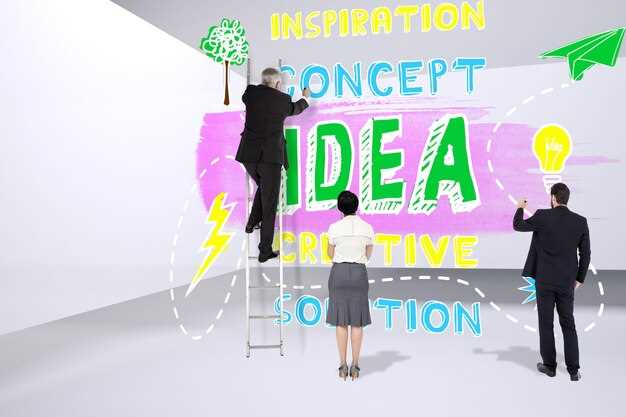
Explore augmented reality (AR) to add interactive layers to your artwork, engaging audiences with experiences that bridge physical and digital spaces. Applications like Adobe Aero allow artists to craft narratives that viewers can experience through their smartphones, enhancing the impact of the visual storytelling.
Consider utilizing machine learning algorithms to analyze and generate unique artistic patterns. Tools like DeepArt and RunwayML offer artists opportunities to create innovative pieces by blending AI-driven processes with traditional artistic techniques. These technologies can inspire new creative approaches and unlock unseen potentials in visual projects.
3D printing technology can amplify your creative process by materializing digital designs into tangible objects, making it an invaluable tool for sculptors and installation artists. Open-source platforms such as Blender provide powerful resources for generating intricate models that can be seamlessly transformed into real-world artifacts.
Embrace virtual reality (VR) to redefine immersive art installations. With platforms like Unity and Unreal Engine, artists can craft entire virtual worlds where audiences experience art pieces from within the creation itself. This offers limitless possibilities for narrative depth and viewer interaction.
Integrate blockchain technology to ensure digital provenance and authenticity of your art, which enhances the value and trust in digital artworks. Platforms such as SuperRare and OpenSea enable artists to tokenize their work, reach broader markets, and maintain control over ownership rights.
Experimenting with these technologies not only broadens creative horizons but also connects art with cutting-edge innovations, ensuring that visual projects resonate in contemporary contexts.
How AI and Machine Learning Transform Visual Art Creation
Explore tools like DeepArt and RunwayML to automate repetitive tasks in your creative process. These platforms use advanced algorithms to analyze your style, allowing you to focus on conceptual development. Leverage AI-generated art filters to experiment with textures, colors, and forms that you wouldn’t typically consider.
AI’s ability to analyze vast datasets reveals trending aesthetics and emerging styles, offering a fresh perspective. Engage with platforms like Artbreeder to create unique art pieces by merging your designs with AI-generated elements. This synergy produces unexpected results, enhancing creativity and innovation.
Machine learning models excel in personalized artistic recommendations. Tools like DALL-E offer solutions for modifying and expanding upon existing visuals, making the iteration phase more dynamic. Integrating these features into your workflow can significantly increase productivity and provide creative leaps.
Utilize deep learning networks to turn sketches into finished pieces, as seen with Google’s AutoDraw. It speeds up the initial stages of creation, allowing artists to focus on refining ideas rather than reinventing foundational visuals. Consider adopting these technologies to streamline your creative process and ensure a polished final product.
AI also facilitates collaboration with international artists by providing real-time translations of visual narratives through platforms like TranslatedArt. This cross-cultural exchange fosters global perspectives and fosters a more inclusive art community.
- Experiment with style transfer to apply different visual influences to your work.
- Incorporate AI-based predictive tools to anticipate trends and adjust your projects accordingly.
- Use generative models to create art that responds to real-time data, making your projects interactive and engaging.
AI and machine learning not only enhance individual creativity but also democratize access to sophisticated art creation tools. Stay updated with these technological advancements to broaden your artistic expressions and redefine the boundaries of visual art.
Virtual and Augmented Reality: New Dimensions in Art Exhibits
Integrate virtual and augmented reality (VR and AR) into art exhibits to create immersive experiences that engage and captivate audiences in unique ways. Implement VR technology to transport visitors to distant locales, allowing them to explore 3D-rendered environments beyond the physical space of the exhibit. Enable viewers to interact with displays, moving around and even through digital artworks, enhancing their understanding and appreciation.
Utilize AR to overlay digital elements onto real-world settings, supplementing traditional exhibits with additional layers of information and interactive features. This approach not only enriches the visitor experience but also facilitates learning by providing context and background in an engaging format.
In the development phase, collaborate with digital artists and tech experts to ensure that the integration of VR and AR is seamless and content truly benefits from these technologies. Consider visitor accessibility, offering options for different levels of mobility and technical familiarity.
| Feature | Benefit |
|---|---|
| 360-Degree VR Tours | Allow remote access and foster global audience engagement. |
| Interactive AR Layers | Provide additional context and enhance the educational aspect of exhibits. |
| Personalized Experiences | Adjust content based on visitor preferences and behavior, increasing relevance and satisfaction. |
Plan exhibits with scalability in mind, allowing for updates and expansions as technology advances. By keeping future flexibility as a consideration, you can extend the lifespan of digital elements and maintain visitor interest over time.
The Role of Blockchain in Authenticating and Selling Art
Adopt blockchain technology to ensure the provenance and authenticity of artwork, minimizing risks associated with forgery and misrepresentation. Blockchain’s decentralized ledger offers a transparent and secure method for tracking artwork ownership and provenance. Every piece of art registered on a blockchain is assigned a unique token, recording its history and origin, which can be easily verified by potential buyers.
- Transparency: Blockchain’s immutable records create trust. Each transaction and ownership change is visible and accessible, providing clear provenance details that deter fraud.
- Authentication: Artists can register their work on the blockchain, ensuring that the original creation is distinguished from copies. This unique digital signature provides buyers with confidence in the authenticity of the art they purchase.
- Smart Contracts: Utilize smart contracts to automatically manage sales agreements and royalty payments. Artists can receive royalties on secondary sales, ensuring fair compensation for their creativity whenever the artwork changes hands.
To engage with blockchain effectively, artists and galleries should invest time in understanding digital wallets and platforms such as Ethereum, which support these functionalities. Collaboration with tech experts can help set up these systems, simplifying the integration process and maximizing the potential benefits. This approach not only secures the artwork but also expands marketplace access, reaching global collectors and investors interested in digital assets.
Innovative Uses of 3D Printing in Sculpture and Installation Art
Embrace the intricacies of organic forms by employing 3D printing to replicate complex natural patterns in sculptures. By scanning biological structures, artists can achieve hyper-realistic textures that bring artwork to life. Explore the capabilities of advanced materials such as biodegradable plastics and metallic powders that allow for durable yet environmentally conscious creations.
Integrate 3D printing into large-scale installations through modular designs. This approach not only saves time and resources but also provides flexibility for artists to adapt and modify individual pieces. Consider interactive components: responsive sensors and LEDs embedded into printed layers can react to audience movements, creating a dynamic dialogue between the viewer and the artwork.
With a commitment to sustainable practices, artists can reduce waste by utilizing 3D printing in upcycling projects. Convert industrial byproducts or plastic waste into art, offering a unique commentary on consumerism and environmental responsibility. Collaborative efforts with engineers and digital designers can lead to groundbreaking innovations that merge technology with traditional artistry.
| Technique | Material | Application |
|---|---|---|
| Organic Form Replication | Biodegradable Plastics | Hyper-realistic Textures |
| Modular Installation | Metallic Powders | Adaptable Large-Scale Pieces |
| Waste Upcycling | Recycled Plastics | Environmental Art Commentary |
By leveraging 3D printing, contemporary artists have the chance to break traditional boundaries, offering audiences immersive experiences and fostering deeper connections with art. The endless possibilities encourage innovation, pushing creative limits to new heights.
Current Trends and Sources of Inspiration in Visual Art
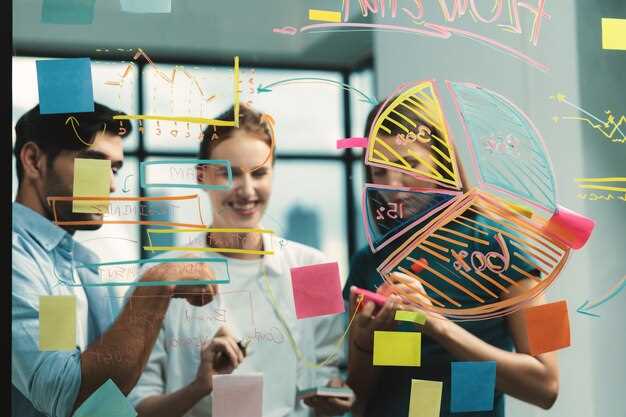
Focus on the resurgence of traditional techniques by blending them with modern tools. Artists increasingly incorporate digital elements into classical media, such as oil painting or sculpture, to create hybrid works that speak to both past and present.
Experiment with AI-generated art. Tools like Midjourney and Stable Diffusion provide models that offer unexpected visual ideas, reshaping our understanding of composition and style. Use these algorithms to generate initial concepts or enhance existing work, positioning technology as a collaborator rather than a competitor.
Explore the potential of sustainability in art. More creators turn to recycled or eco-friendly materials, promoting environmental consciousness. Marketplaces for upcycled art thrive, encouraging artists to innovate while reducing ecological footprints.
Seek inspiration from diverse cultural narratives and embrace the rich tapestry of global experiences. Investigate stories and visual traditions from underrepresented regions to infuse originality and depth into your projects. Engage with artists from various backgrounds to gain fresh perspectives and collaborative opportunities.
Place strong emphasis on the theme of mental health. Art increasingly serves as a cathartic medium, helping audiences process complex emotions. Delve into themes of self-discovery and resilience, offering viewers both solace and a sense of connection.
Exploring Eco-Conscious Art: Materials and Topics
Consider integrating sustainable materials such as recycled metals, organic fabrics, and plant-based dyes into your projects. These choices reduce environmental impact and add a unique texture and narrative to your creations. Embrace materials like bamboo paper or reclaimed wood, which offer durability and an aesthetic appeal that aligns with eco-conscious values.
Address pressing environmental issues by selecting topics like marine conservation, urban pollution, and biodiversity. Highlight the beauty of nature and the consequences of neglect through evocative imagery and thought-provoking installations. Create awareness and inspire action by crafting pieces that tell stories of resilience and harmony between humanity and earth.
Incorporate technology to enhance your eco-conscious art. Use virtual reality to simulate experiences of natural landscapes or augmented reality to illustrate the impact of climate change. These tools can transform passive observation into active engagement, fostering a deeper connection with the audience.
Collaborate with environmental activists or organizations to amplify the message of your art. Joint efforts can combine artistic expression with scientific insight, creating works that are not only visually striking but also educational. Efforts like these help bridge the gap between art and activism, making sustainability a shared responsibility and a compelling narrative.
The Influence of Global Cultures in Contemporary Art
Explore diverse artistic expressions by incorporating elements from global cultures. Engage with traditional motifs and modern methods to create fusion art that resonates across cultural boundaries. Look into Japanese minimalism or African geometric patterns for inspiration, utilizing their distinctive aesthetic principles to enhance your work.
Workshops and collaborations with artists from varied backgrounds can provide invaluable insights. Consider hosting joint exhibitions that juxtapose different cultural artworks. This approach fosters an understanding and appreciation for diverse perspectives and can lead to innovative creations.
Technology plays a crucial role in accessing global art influences. Online platforms and virtual reality tools allow artists to experience international art forms without geographic constraints. Participate in digital artist residences and interact with artworks from around the globe, adding depth and diversity to your projects.
Immerse yourself in community art projects that celebrate culture. Collaborate with local cultural institutions to bring unique traditions into contemporary art. Organize events that highlight the crafts and narratives of indigenous artists, ensuring their voices are authentically represented.
Explore the potential of cultural symbolism in storytelling through art. Symbols often convey profound meanings effortlessly. Study how different cultures use symbolism in their artworks, and integrate these insights to create visual narratives that speak universally.
How Social Issues are Shaping Artistic Expressions
Address specific social issues directly to create impactful art by focusing on themes of diversity, equality, and justice. Artists are increasingly using their platforms to highlight climate change, racial inequality, and mental health disorders. Art becomes more compelling when it connects with the audience on these pressing topics, sparking conversation and inspiring action.
Leverage multimedia approaches to amplify your message. For example, incorporate virtual reality to immerse viewers in environments affected by rising sea levels or pollution, providing a first-hand experience of the impact of climate change. Such innovative techniques make the message more relatable and urgent.
Consider collaborating with communities and organizations at the forefront of social causes. These partnerships not only provide authenticity but also deepen the artwork’s relevance and reach. Engaging with activists or those with lived experience ensures the narrative remains genuine and avoids superficial representation.
Experiment with digital platforms that facilitate global engagement. Use social media and online galleries to reach wider audiences. By doing so, you not only increase visibility but also invite diverse perspectives, enriching the discourse surrounding your work and the social issues it addresses.
Finally, measure the impact of your work by engaging with your audience post-creation. Conduct discussions, panels, or surveys to gather their reflections and insights. This feedback can guide future projects, ensuring your artistic endeavors remain responsive to social challenges and foster positive change.
Harnessing Digital Tools for Unique Artistic Style
Explore and experiment with various digital tools to create a distinct artistic style that speaks to your vision. Begin by selecting a digital sketchpad or application that offers diverse brush options and texture tools, such as Procreate or Adobe Fresco.
- Select a Tool that Resonates: Choose software that feels intuitive and inspires creativity. For instance, Adobe Illustrator is great for vector art, while Corel Painter provides a more traditional painting feel.
- Customize Brushes and Textures: Explore custom brush settings to mimic traditional media or create abstract effects. Platforms like Krita offer extensive brush customization for personalized output.
- Incorporate AI Tools for Unique Elements: Utilize AI-driven features in tools like DeepArt or ArtBreeder to generate innovative textures or compositions that traditional methods can’t achieve.
- Layer Techniques for Depth: Experiment with layering techniques found in programs like Photoshop to add complexity and richness to your artwork. Use masks and blending modes creatively to achieve unique effects.
- Engage with Online Communities: Participate in digital art forums or social media groups to seek feedback and collaborate with other artists on global projects. Platforms like DeviantArt or Behance provide inspiration and connection with fellow creatives.
- Regularly Update and Adapt Your Tools: Ensure that your chosen software is up-to-date to access the latest features and enhancements that foster innovation and keep your work at the cutting edge of technology.
By boldly adopting these digital solutions and integrating them into your creative process, you can develop an artistic style that is not only unique but also reflective of the technological advancements driving the art landscape in 2025.
Video:

Graphic Design Trends 2025
Graphic Design Trends 2025
Q&A:
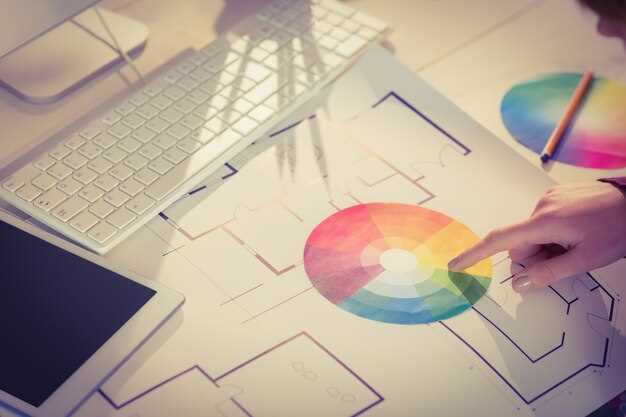
What trends in creative visual projects are predicted for 2025?
In 2025, several trends are expected to shape creative visual projects. These include a growing focus on sustainability and eco-friendly practices in design, the integration of AI technologies for more personalized and interactive experiences, the rise of 3D printing in creating unique art pieces, and the continued popularity of virtual and augmented reality for immersive storytelling. Additionally, projects that emphasize inclusivity and diversity are expected to gain traction, reflecting broader societal shifts.
How will AI impact creative visual projects in the near future?
AI is likely to play a significant role in creative visual projects by enabling more sophisticated design tools that allow for quicker iteration and experimentation. AI can automate mundane tasks, freeing up artists to focus on more creative aspects of their work. It also has the potential to provide insights into consumer preferences, aiding creators in designing more appealing visuals. AI-driven tools may also enhance collaboration among creatives by offering new ways to merge different artistic styles.
Can you give an example of how sustainability is being incorporated into visual projects?
One example of incorporating sustainability into visual projects is through the use of recycled materials in art installations and fashion designs. Artists are increasingly turning to discarded items to create pieces that not only make a statement but also reduce environmental impact. Another approach is the use of digital platforms to showcase work, which minimizes the need for physical resources like paper and ink. This shift towards more eco-friendly practices is gaining momentum as creators and audiences alike become more aware of environmental issues.
What role does inclusivity play in creative visual trends for 2025?
Inclusivity is expected to be a major driving force in the development of creative visual projects. Artists and designers are actively incorporating diverse perspectives and cultural influences into their work to better reflect the society around them. This can be seen in various aspects, from broader representation within media and advertising to collaborations that celebrate cultural diversity. Projects that prioritize inclusivity not only resonate with a wider audience but also contribute to social awareness and understanding.
How are virtual and augmented reality influencing visual storytelling?
Virtual and augmented reality technologies are transforming visual storytelling by offering immersive experiences that engage audiences in entirely new ways. These technologies allow for interactive narratives where viewers can explore and influence the storyline. For example, in virtual reality, users can step into a story and witness events from a first-person perspective, offering a deeper emotional connection. Augmented reality can enhance real-world environments with digital overlays, providing additional context and interaction opportunities. These innovations are expanding the possibilities for creators to construct dynamic and engaging stories.
What are some emerging trends in creative visual projects we can expect to see in 2025?
In 2025, creative visual projects are expected to be heavily influenced by advancements in artificial intelligence and machine learning technologies. Artists and designers will likely incorporate AI-generated visuals to produce more personalized and dynamic content. Virtual reality (VR) and augmented reality (AR) will become more common, providing immersive experiences that blend physical and digital environments. Sustainability will also be a key trend, with creators focusing on eco-friendly materials and methods to reduce the environmental impact of their projects.

